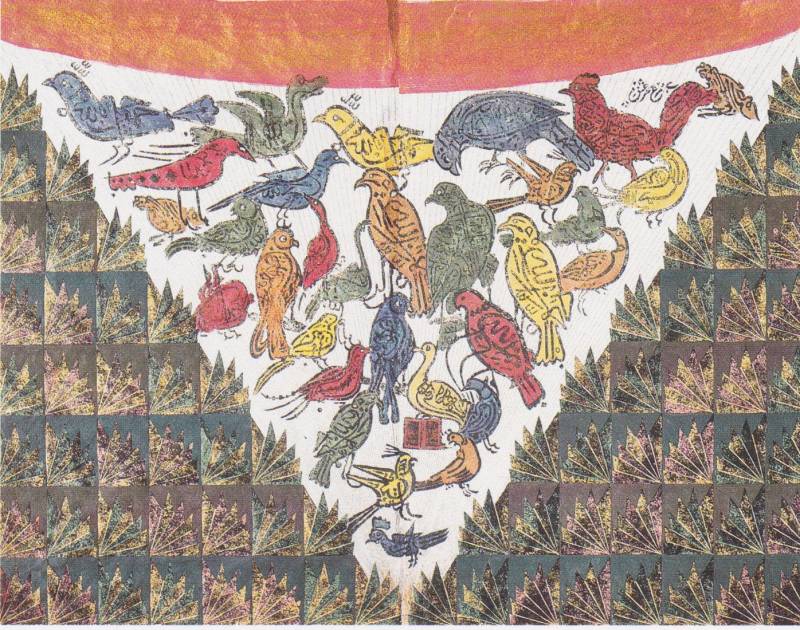
Monoprints from the Conference of the Birds
The Manteg at-Tair, Known as the Conference or Parliament of the Birds, is a mathnawi, i.e. a poem in rhyming couplets composed towards the end of the twelfth-century by Farid ud- Din Attar, the celebrated Persian poet from Nishapur. It is an animal fable that involves the birds of the world in the search for their king, the Simorgh. The birds, who represent a range of human archetypes such as the timid finch and the coy duck, elect the hoopoe to lead them to the object of their desire. Each bird expresses its reservations and apprehensions; each in turn is placated by the hoopoe. The journey takes them over seven valleys, that chart the progress of the aspirant. Only thirty birds survive the arduous voyage and these thirty (si in Persian) birds (morgh) finally come face to face with the Simorgh. This pun is the crux of the tale: They are confronted by themselves. The imagery in Graham Day's monoprints is derived from
popular talismans found in the Middle East and India. Zoomorphic calligraphy is not exclusively Persian, Arabic or Turkish. Animals, plants and human figures made of letters existed in branches of Islamic art such as metalwork of the eleventh and twelfth centuries. Later Indian artists excelled in the construction of these artful tugras. Day specifically chose to work with these images using relief printmaking which is inevitably concerned with mirror images and symetry, a symbolic reference to the exoteric (zahir) and esoteric (batin) aspects of being. Other techniques, materials and ideas in Day's interpretation is the use of monoprint techniques where the blocks are used by hand and not in a press. The link with anaphora, a literary device popular with Attar, where words or phrases are repeated and strung together like pearls, is another one: Day sees the repeated printing of the bird-images, which are themselves made up of text, as a visual equivalent. Day has no hesitation in labelling this series as illustrations of, which is anathema to most contemporary artists. His idea of interpretation is to accept the grandeur and seminal quality of a work as a given force and rework it, adding a gloss or nuance that reflect the time and context of its rebirth. These working methods are standard practice in theatre, music and architecture. His cross cultural approach has enabled a modern audience to reappreciate the universality and relevance of Attar's famous poetry.
Rose Issa